AGFC dedicates Glaise Creek water-control structure
BY Jim Harris
ON 11-12-2024
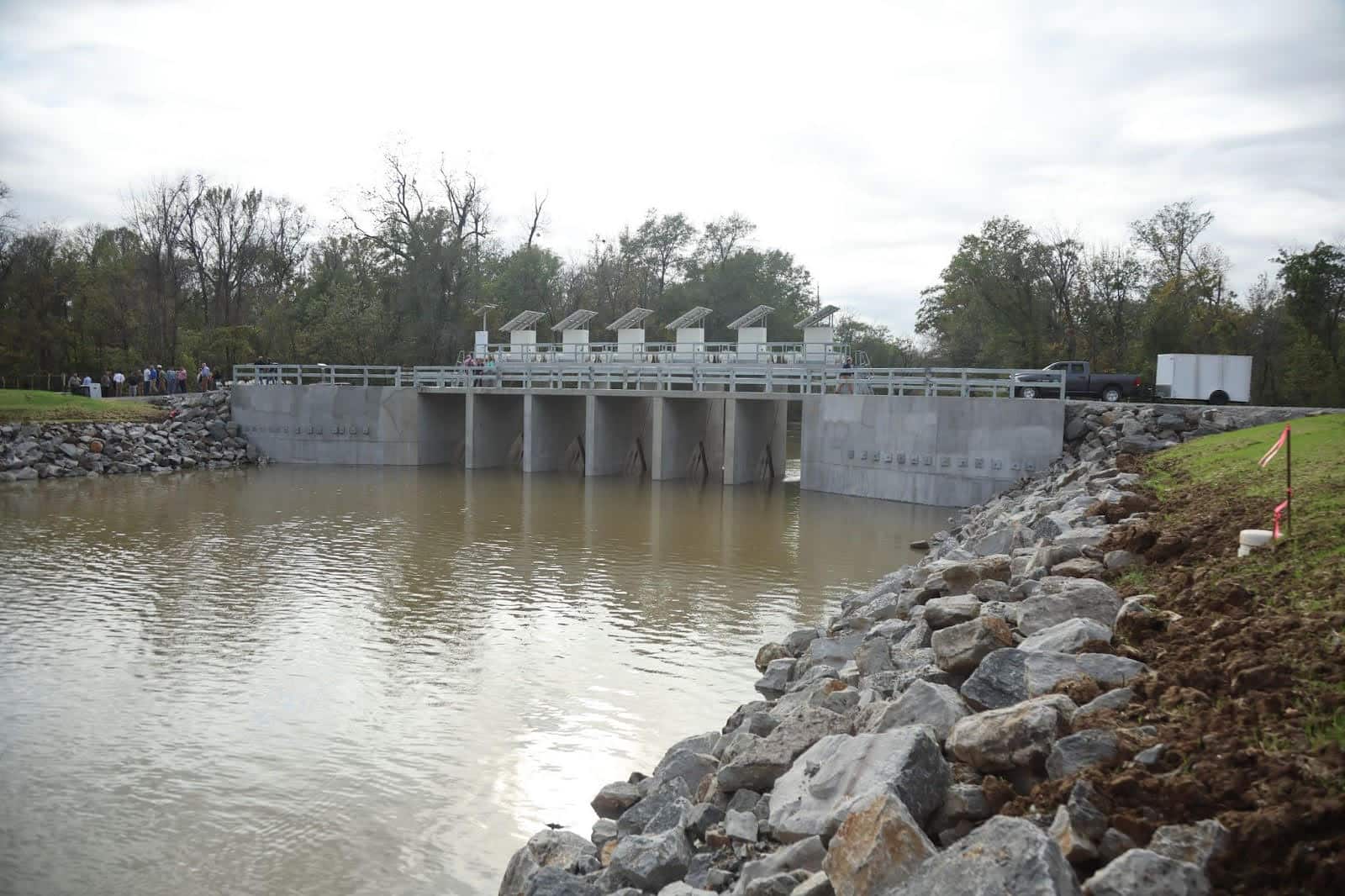
BALD KNOB — A major component in the Arkansas Game and Fish Commission’s restoration of Henry Gray Hurricane Lake WMA has been completed with the opening of a modern water- control structure on Glaise Creek, which was dedicated Thursday afternoon by AGFC leadership, project partners and other dignitaries.
“This is a really important day for the Arkansas Game and Fish Commission and for all the Arkansans that love Henry Gray Hurricane Lake Wildlife Management Area,” AGFC Director Austin Booth said of the largest continuous tract of bottomland hardwoods in the upper White River drainage basin.
Booth noted the partners in the project who were in attendance Thursday, from representatives of Ducks Unlimited to 2nd District U.S. Rep. French Hill, the governor’s office and members of the Arkansas General Assembly, who “have really stepped up to the plate with us as we try to tackle the problem of conservation funding.”
Booth said, “I just want to be abundantly clear about what this moment means for the state of Arkansas. If we have problems at Hurricane Lake WMA with timber health then we have problems with the future of waterfowling in Arkansas and throughout the Mississippi Flyway. We looked that dead in the face and we decided to do something about it.”
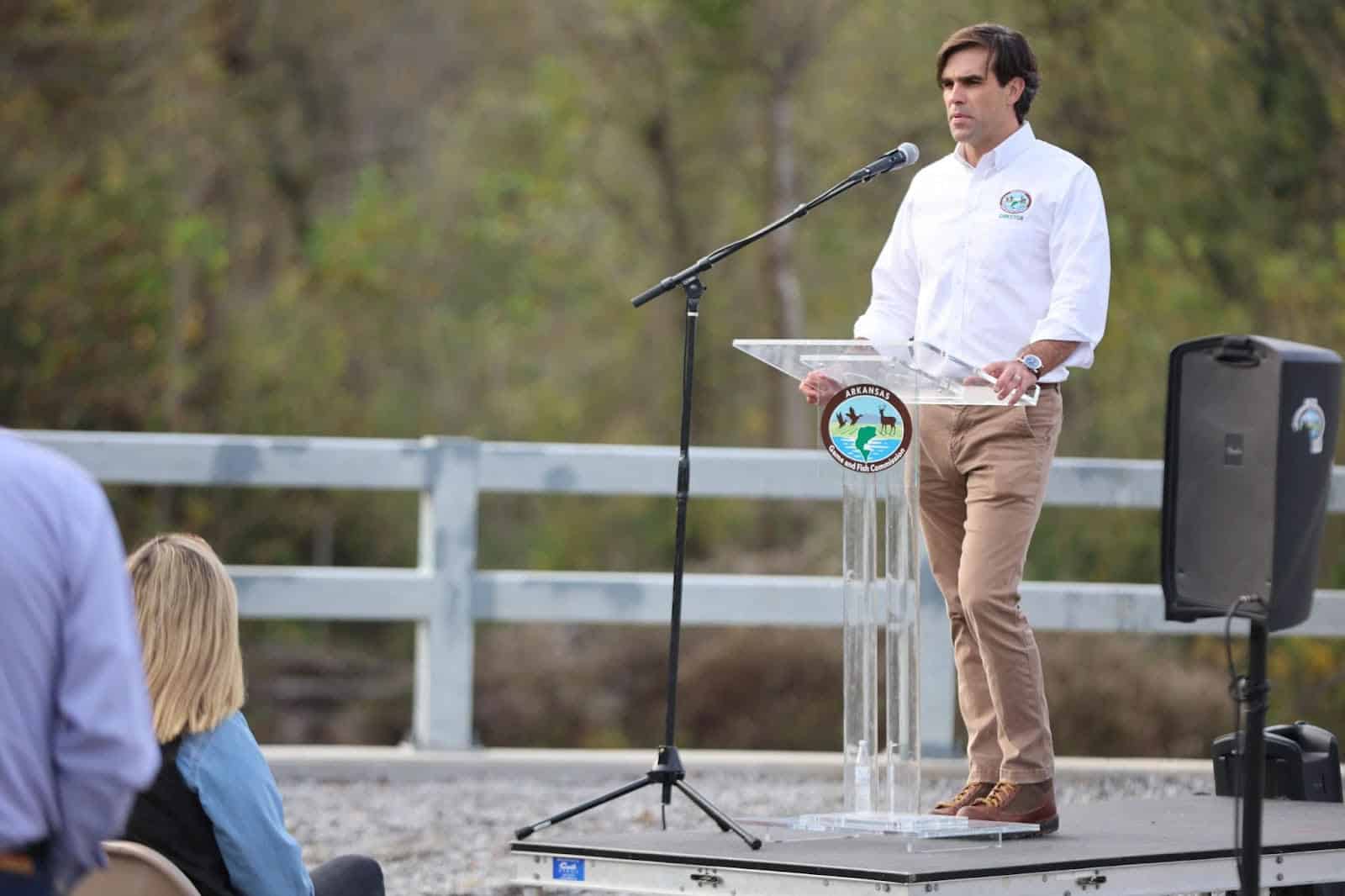
Infrastructure renovations in Hurricane Lake WMA, including extensive rehabilitation work in what served as the south unit GTR before it was decommissioned, were led by AGFC staff with contributions from several funding and logistical partners, including Ducks Unlimited and the North American Wetlands Conservation Act. Total costs for both renovation projects exceeded $10.7 million. The south GTR unit project, completed in December 2021, was funded by $1.7 million from AGFC, more than $285,000 from Ducks Unlimited and nearly $1 million from a NAWCA grant. Total Glaise Creek project costs exceed $7.73 million: $4.56 million from AGFC, $2 million from NAWCA and $1.15 million from Ducks Unlimited.
“I want to thank Ducks Unlimited. They have been literally the best conservation partners we could ask for to make this project a success,” Booth said. “I’m grateful for that not only because this project is finished, but we have lots of other greentree reservoirs in Arkansas that we’re going to need their same patience and support and partnership in.”
Commission Chairman J.D. Neeley, in his seventh year on the Commission, said, “It seems like yesterday when I first got on the commission, this problem at Henry Gray had popped up … we made our first tour here, it was quite a gut check to see the health and decline of our forest. We really made a commitment at that point to do everything we could, to follow staff’s recommendations to make this better for future generations.”
Physical work on renovating Glaise Creek began in 2022 after 10 years of study and planning, beginning with the 2014 forest health assessments that revealed serious water stress to more than 40 percent of all trees in Hurricane Lake’s GTRs. Further tests continued, and drone flights in 2021 to monitor forest health showed that roughly 3,600 acres of trees had died or were dying.
“It is a truly remarkable day,” AGFC Deputy Director Brad Carner, who formerly headed up the agency’s Wildlife Management Division, said. “This day has literally been over a decade in the making. That’s not an exaggeration. And even prior to that 2014 forest health assessment, staff locally recognized that there were forest health issues here on this WMA but we lacked the data to really validate that and we really needed data to be able to justify making changes moving forward.”
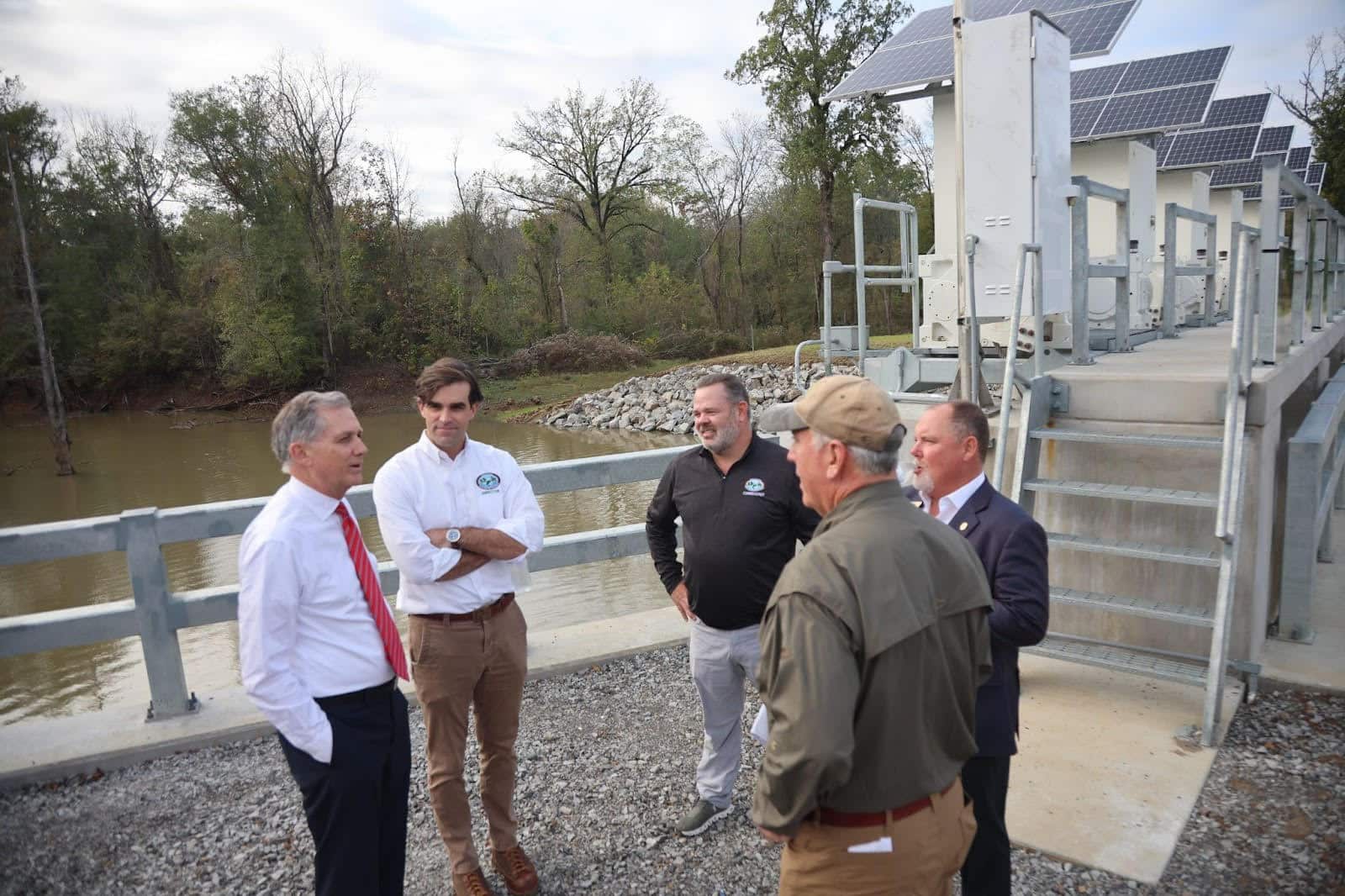
The previous Glaise Creek water-control structure was built in 1974, which replaced two 60-inch screwgate pipes installed in the mid-1960s. The structure was designed to retain water at and below 192 feet msl, but the structure did not sit in the original creek channel. Rather, the bottom of the structure was set several feet above the actual channel, and the structure was much narrower than the natural channel width, greatly restricting the flow of water and often clogging with debris. Water could not be regulated until river levels fell. Trapped water instead stayed stagnant among many of the hardwoods and harmed the red oak component of the forest, causing significant die-off.
The problem may have been best illustrated in the summer of 2020, when late winter and spring White River flood waters that should have long since dissipated remained high throughout the WMA.
Construction began in 2022 to install a much larger, modern water-control structure properly sized to mimic the natural Glaise Creek width and depth with the original creek channel, rather than offset as the older structure had been.
The size of the new structure dwarfs the original, measuring 68 feet long (running north-south) by 25 feet wide (running east-west) and standing more than 30 feet tall. The structure includes six bays that are each 10 feet wide, each housing a single 15-foot tall overshot gate. This allows the new structure to pass five times the water that the previous structure held. Building the base and framing the structure required 1,452 cubic yards of concrete. Operation of gates within the new water-control structure will be conducted based on assessments of forest health and restoration potential, and ongoing forest management activities. The gates can be operated at the touch of a button from a cellphone or a laptop by AGFC biologists. Solar panels atop the structure deliver the power to batteries to operate the system, according to Jason “Buck” Jackson, the AGFC’s wetlands coordinator. This will allow AGFC to have a proactive approach to water management within this bottomland hardwood system, Jackson said.
Hurricane Lake WMA is one of three GTR renovations that have been underway simultaneously in the last few years. Earl Buss Bayou DeView WMA and Shirey Bay Rainey Brake WMA, both in northeastern Arkansas, have seen infrastructure enhancements. Further GTR renovation work is being planned for Dave Donaldson Black River WMA in northeastern Arkansas and George H. Dunklin Jr. Bayou Meto WMA in southeastern Arkansas as well.
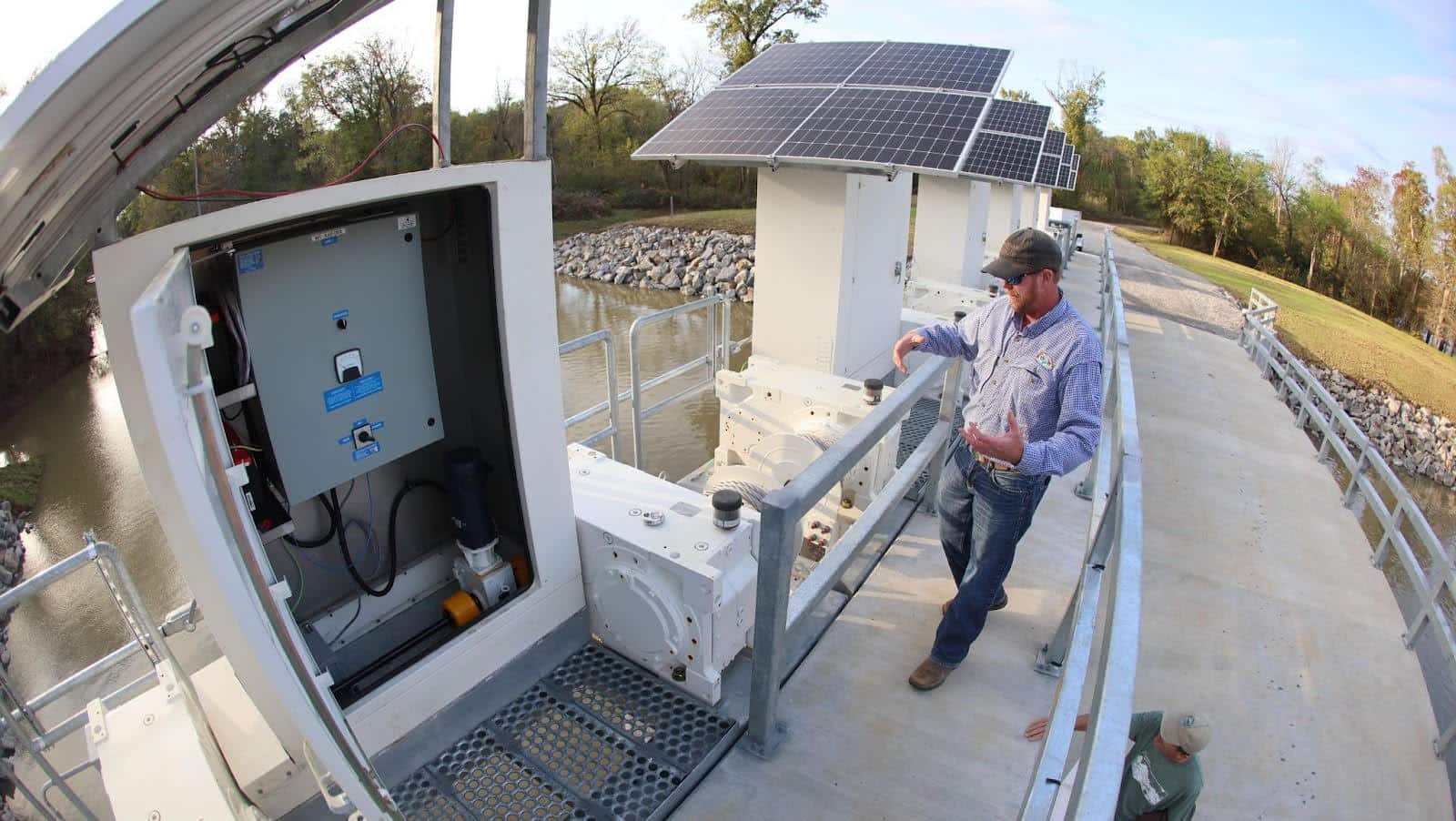
“To think that we’re standing here now looking at really what is a good representation of what our renovation initiative will look like moving forward as we go from WMA to WMA, it’s also exciting to announce that we completed just within the past week or two the GTR renovations at Earl Buss Bayou DeView WMA, where we very first started, also in partnership with Ducks Unlimited,” Carner said.
GTRs have been an important part of Arkansas waterfowl habitat and hunting opportunity for decades, and will remain so in the future. GTR infrastructure allows land managers to control the timing and depth of intentional flooding by opening and closing gates along waterways. The AGFC manages about 50,000 acres of GTRs spread across more than a dozen WMAs. The public flooded-timber waterfowl hunting opportunity that has been provided through these GTRs is world-renowned and offers an experience not available in many places.
At Hurricane Lake, like many other WMAs, managers have a best-case scenario for water-level management; but many influences, both internal and external, have led to challenges and adjustments in how management actually occurs within and among years. Water levels and management at Hurricane Lake are greatly influenced by the White River because of its immediate proximity to the WMA and its GTRs.
Much of the infrastructure within these GTRs was constructed more than 50 years ago with an emphasis on holding water. Publicly managed GTRs on WMAs represent especially critical habitats that must be carefully managed for all Arkansans and the state’s public trust to sustain their ecological character and resources for generations to come. The emerging body of scientific information about bottomland hardwood forests and the role that GTRs play must serve as the foundation for renovation planning and implementation and future management. Today, the focus of management must shift to moving water through these systems to maintain forest health.
“This is the largest component of the Hurricane Lake renovation,” Carner said of the Glaise Creek structure. “This process, this restoration initiative, our leaders for that for our agency within the Wildlife Management Division were (chief of Wildlife Management) Luke Naylor, Buck Jackson and (AGFC Statewide Habitat Coordinator) Rob Willey. That’s a multifaceted approach, that’s doing detailed data collection on forest health, it’s doing evaluation on elevation throughout the areas, our infrastructure, lots of design and planning. There is a huge education and communication component.
“This project is far from over. This is a major milestone, a foundational event that enables us to propel us forward here. I’m incredibly, incredibly proud of just all the collective effort from the conservation community … that has made this success.”
The completion of the Glaise Creek water-control structure included reopening a roadway over the structure that provides important access into the WMA for users when water levels on the White River allow.
Carner said, “The local users have been impacted and have made sacrifices and have waited patiently while this important work was underway.”
Henry Gray Hurricane Lake WMA Timeline
Early 1930s — Singer Sewing Machine Co. sells a major tract of White County land composed of bottomland hardwoods to Fisher Body Co.
1941 — The land is designated as a game refuge.
1958 — The land is officially named by the AGFC as a wildlife management area.
Mid-1960s — Two 60-inch screwgate pipes are installed to regulate water from Glaise Creek into the bottomland hardwood areas.
1974 — A water-control structure is built on Glaise Creek to replace the two screwgate pipes; this structure is manually operated and allows habitat biologists to retain water at or below 192 feet mean sea level in the WMA. The flood level of Glaise Creek is 192 feet msl. Glaise Creek and Cut-Off Creek, which runs into Glaise Creek, are tributaries of the White River that enter the WMA from the north side, traveling south through the WMA to the river. The Little Red River borders the southern portion of the WMA.
2014 — Data from forest health assessments lead to concerns at the AGFC and other agencies about the health of large portions of bottomland hardwoods in Hurricane Lake WMA.
2016 — The AGFC delays the implementation of boards to hold water in the WMA from the traditional Oct. 1 date to Nov. 15.
2016-17 — Public meetings to discuss GTR management are held throughout eastern, north-central and northeastern Arkansas to explain the need for management changes on Hurricane Lake and all agency GTRs.
2017 — The AGFC announces its intention to cease operation of the 43-year-old Glaise Creek water-control structure for at least the next decade, functionally eliminating the ability to hold water within the north GTR unit. The AGFC also decides that the south GTR unit, showing widespread tree mortality that results in a major construction project to remove earth plugs and water-control structures to allow water to flow unimpeded, will no longer operate as a GTR. The natural channel width and depth in the south unit is restored; access is maintained through the area using a series of bridges and improved low-water crossings.
2018 — AGFC added a 4-foot pipe and screwgate in the bottom of Glaise Creek to allow more drainage and storage.
2021 — Drone flights to monitor forest health confirm what other studies have shown in recent years: That roughly 3,600 acres of trees are dead or dying.
2021 — Infrastructure renovation within the former south GTR unit is completed and AGFC staff begin implementation of a forest management plan within the former unit. Beginning that fall and over the next two fall seasons, staff lead the collection of 1,055 pounds of Nuttall oak acorns from the WMA to be taken to the Arkansas Department of Agriculture Forestry Division Baucum Nursery for planting and growing to seedlings.
2022 — Construction of a modern water-control structure on Glaise Creek begins.
2023 — AGFC staff lead the planting of 40,000 seedlings on 168 acres within the former south GTR unit (survivorship evaluations one year later will indicate 71 percent survival in the north tract of reforestation, an area that sits at 189.17-191.09 feet msl elevation; in lower elevations, seedling survival is 4 percent).
2024 — AGFC staff plan to plant 19,000 Nuttall oak seedlings on 98 acres, focusing on higher-elevation tracts with the WMA where survival is anticipated to be better.
October 2024 — Construction is completed on the water-control structure at Glaise Creek and an earthen dam removed to allow the creek to flow through the structure. The system was designed by Aqua Systems 2000, a Canadian company.
Nov. 7, 2024 — The Glaise Creek water-control structure is dedicated by AGFC leadership and partners.
####
CUTLINES:
LARGE STRUCTURE
The new water-control structure on Glaise Creek in Henry Gray Hurricane Lake sits in the original creek channel and offers enough passage to help keep water flowing through the WMA when the White River allows. AGFC photo by Mike Wintroath.
SPEAKER
AGFC Diretor Austin Booth spoke to attendees at Thursday’s dedication of the structure, signaling a milestone in greentree reservoir renovations at Henry Gray Hurricane Lake WMA. AGFC photo by Mike Wintroath.
GROUP SPEAKING
From left to right:
U.S. Congressman French Hill speaks with AGFC Director Austin Booth, Commissioner Brandon Adams, Commission Chairman J.D. Neeley and Commissioner Rob Finley at Thursday’s dedication of the Glaise Creek structure on Henry Gray Hurricane Lake WMA. AGFC photo by Mike Wintroath.
MAN ON CATWALK
AGFC Wetlands Program Coordinator Buck Jackson inspects solar arrays that will power overshot gates at the newly completed Glaise Creek structure. AGFC photo by Mike Wintroath.
Recent News
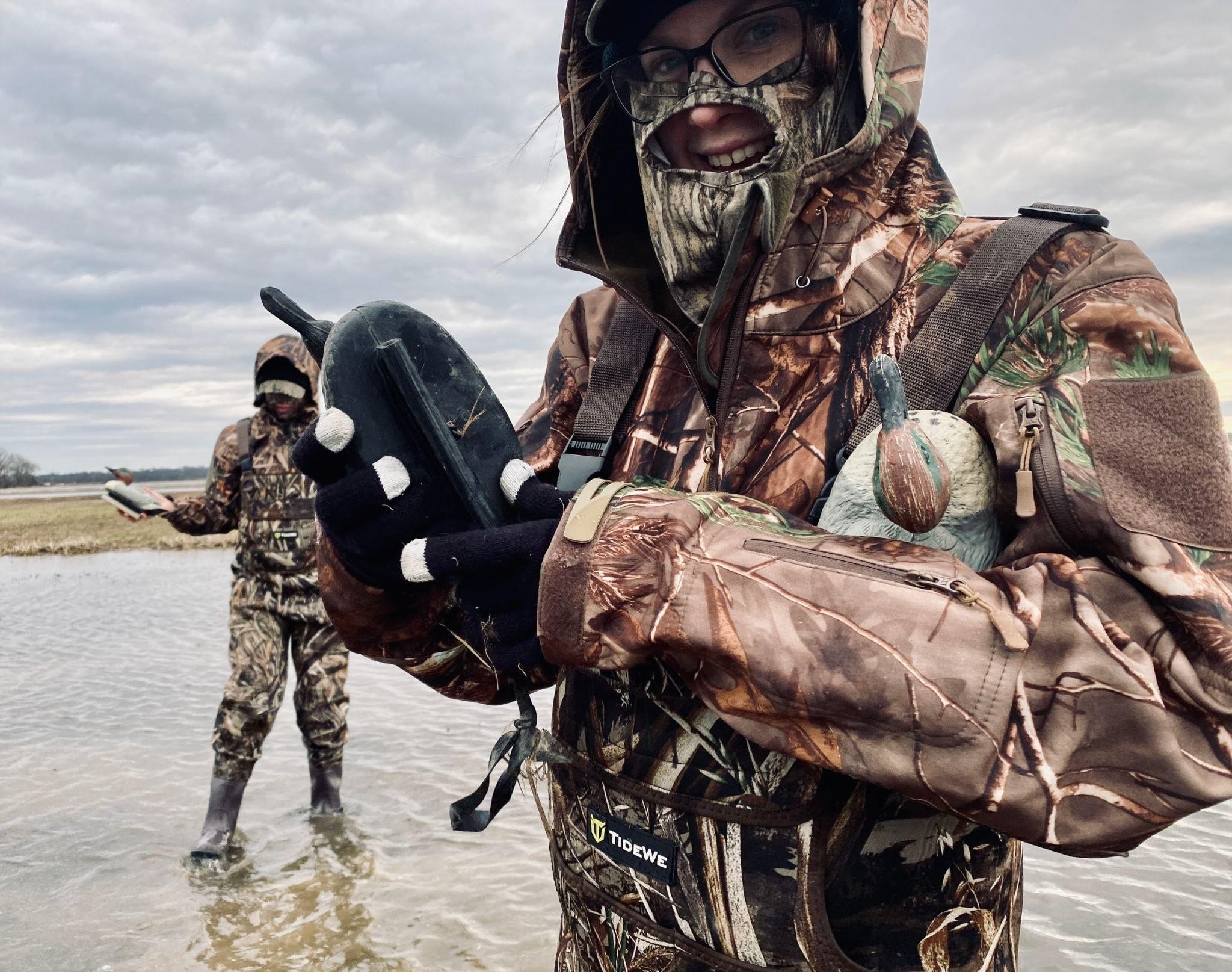
Waterfowl Report: Better Conditions Greet Hunters
Dec. 12, 2025
Subscribe to Our Weekly Newsletter E-mails
Don’t miss another issue. Sign up now to receive the AGFC Wildlife Weekly Newsletter in your mailbox every Wednesday afternoon (Waterfowl Reports are published weekly during waterfowl season and periodically outside the season). Fishing Reports arrive on Thursdays. Fill in the following fields and hit submit. Thanks, and welcome!

